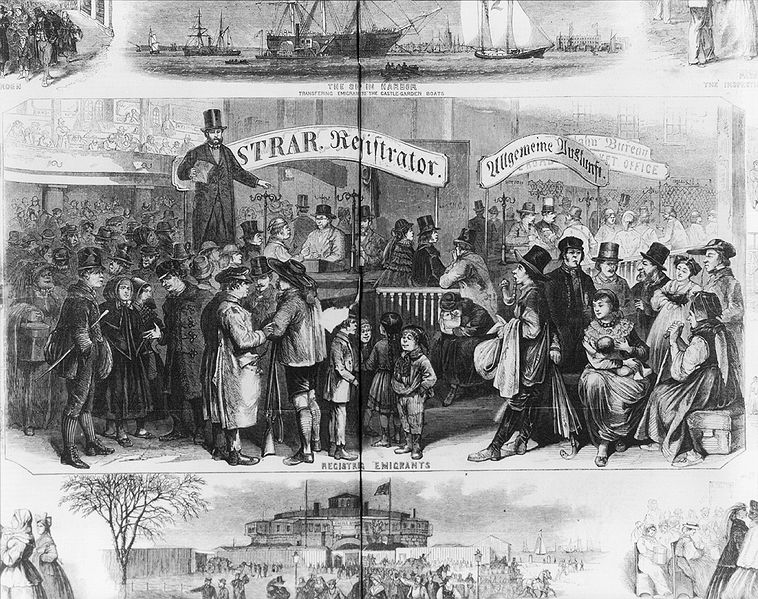 Learn to Speak Like a Native New Yorker
June 10, 2014
Learn to Speak Like a Native New Yorker
June 10, 2014
If you will be spending some time in New York City, you might as well learn to speak like a New Yorker. While native New Yorkers are a rarity, the New York City accent is still widely found throughout the five boroughs, helping give the city much of its charm.

You will have no problem recognizing the accent as you have probably already heard it in cartoons or movies. While you may associate it with sleek gangsters or gritty and jaded police officers, the characteristics of the New York City accent make it quite a unique and interesting subject to study. If you want to impress the people back home and your friends that speak fluent English, or you just want to have a cool party trick, why not practice some of the accent’s more easily identifiable features.
Elusive “R”
The most recognizable, almost stereotypical New York pronunciation is the elusive “r.” Most commonly, the “r” consonant is not pronounced, especially when it is found in the middle of a word. The exception to this rule is when the “r” is situated at the end of a word or is followed by a vowel.
In the past, the silent “r” was considered a sign of immigrants or the lower class, therefore, it was stigmatized. While still popular, the number of New Yorkers that drop the “r” is dwindling.
Intrusive “R”
The intrusive “r” is a different phenomenon where the consonant attaches itself onto words that normally don’t include it. For example, the phrase “law and order” is sometimes pronounced as “lawr and order” or “idea” becomes “idear.”
Glottal Stop
Some linguists say the glottal stop is heavily influenced by the southern English and cockney accents. Within the United States, the greatest number of people using the glottal stop [ʔ] is centered in New York City.
The easiest way to spot the glottal sound is in the pronunciation of “bottle,” where the double “t” is replaced by the glottal sound. As it can be difficult to express what the glottal stop sounds like in writing, the best way to learn is to ask your PC TECH teacher for help or search for audio references on the Internet.
Intrusive “G”
Similar to the intrusive “r,” the intrusive “g” is one of the most stereotypical sounds found in the New York City accent. It is uncommon to all other regions of the United States and was once considered as a sign of the lower classes. The best example of the intrusive “g” can be heard when pronouncing “Long Island,” which is commonly heard as “Lawn Guyland.”

Short “A” Split
Another typical New York pronunciation is the short “a” split which most of us will recognize from the cartoon character Bugs Bunny. When words include the “a” vowel, like “cab” or “avenue,” the “a” is sometimes pronounced as “i-uh,” resulting in “ki-uhb” for cab and “i-uhvenue” for avenue.
While in the past, the short “a” split was most commonly associated with New York City, nowadays, it is rare to hear even locals use it.
These examples are just some of the most recognizable characteristics of the New York City accent. By digging deeper, you will uncover a linguistic treasure trove of the city’s unique vocabulary, grammar, pronunciations, and sayings, as well as have a greater awareness of the historical, geographical, and social factors that created this endearing accent. With study and practice, even you can one day be mistaken as a native New Yorker.
Archive
- October 2023
- August 2023
- July 2023
- June 2023
- May 2023
- April 2023
- March 2023
- February 2023
- January 2023
- November 2022
- October 2022
- August 2019
- July 2019
- June 2019
- May 2019
- April 2019
- March 2019
- February 2019
- December 2018
- October 2018
- September 2018
- August 2018
- July 2018
- June 2018
- May 2018
- April 2018
- March 2018
- February 2018
- January 2018
- December 2017
- November 2017
- October 2017
- June 2017
- April 2017
- March 2017
- February 2017
- January 2017
- December 2016
- November 2016
- October 2016
- September 2016
- August 2016
- July 2016
- June 2016
- May 2016
- April 2016
- March 2016
- February 2016
- January 2016
- December 2015
- November 2015
- September 2015
- August 2015
- July 2015
- June 2015
- May 2015
- April 2015
- February 2015
- January 2015
- November 2014
- October 2014
- September 2014
- August 2014
- July 2014
- June 2014
- May 2014
- April 2014
- March 2014
- February 2014
- January 2014
- December 2013
- November 2013
- October 2013
- September 2013
- August 2013
- July 2013
- June 2013
- May 2013
- April 2013
- March 2013
- February 2013
- January 2013
- December 2012
- November 2012
- October 2012
- September 2012
- August 2012
- July 2012





